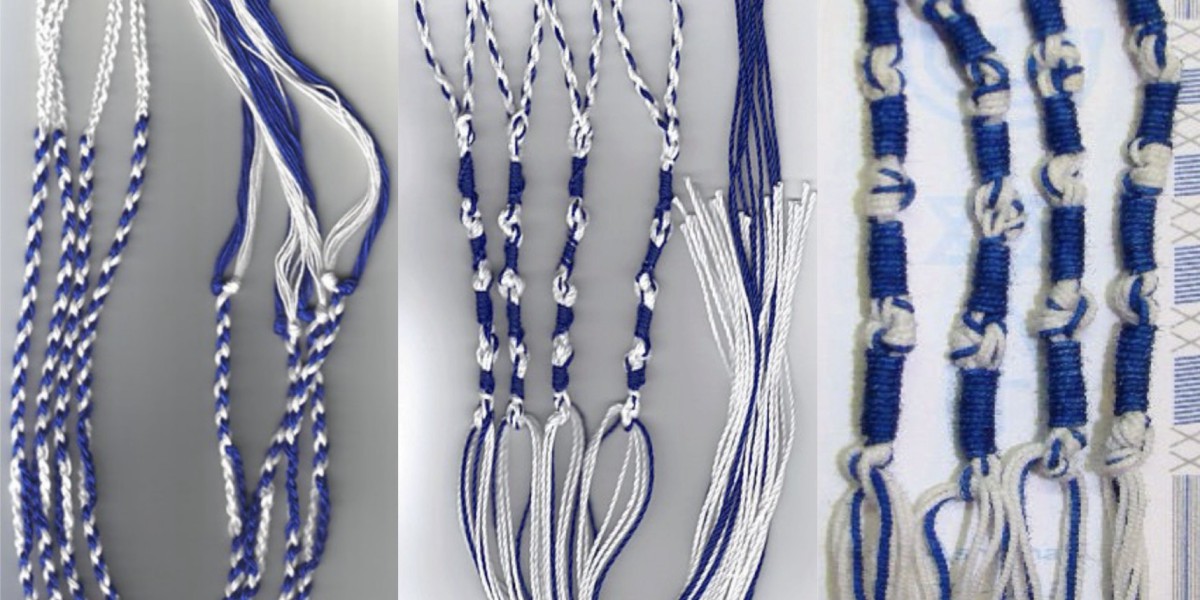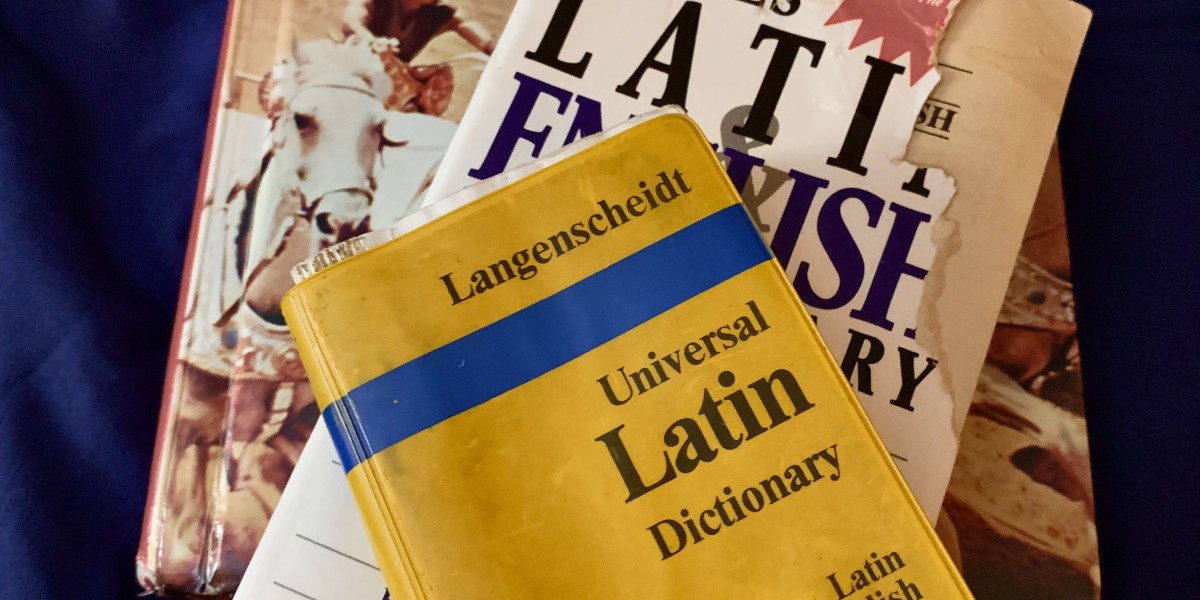The Torah is rather vague on exactly how to make tzitzith and what they should look like. It only states that that they should be made upon the four corners of one's garment and should contain a thread of blue. The manner of their construction and the method for tying or weaving them onto a garment is left largely to the reader's imagination and, of course, to the dictates of tradition.
There are some archacological examples of tzitzith that have been found in eretz Israel from ancient times and they generally do not vary significantly from modern varieties. They are most often made of 4 - 8 strings which are passed through a reinforced square of material sewn onto the four corners of some type garment, then these strings are woven, knotted or braided into a decorative but meaningfully designed tassel. The Hebrew word "tzitz" translates as: blossom, flower, or wing, and so most are designed with this description in mind.
The two most common types in use today are the Karaite and the modern rabbinical variations. We will briefly examine each.
Karaite Tzitzith
The Karaite version of tzitzith consists of equal numbers of white and blue strings braided into four long sections, with a loop at one end to be fastened onto a garment, and with short, blue and white strings at its opposite end that are somewhat reminiscent of a flower blossom. No binding stipulations on the type of blue dye or the type of knotting and braiding is known to exist in Karaite halakah. No truly significant changes have been made in the way Karaite tzitzith are made since at least the 7th century C.E.
The rabbinical version of tzitzith consists of four strings looped through a hole in a reinforced garment corner, which are then permanently knotted and twisted into a cord that terminates in long loose string ends at its bottom. Most versions utilize one single completely blue string, which results in two of its loose string ends being blue, and the remaining six being white. There are two notable exceptions to this: some Chassidic Jews only dye half of one blue string, so that the finished tassel only shows a blue thread at its bottom.
They do this partly as a kabbalistic tradition having to do with numerology, and partly to fulfill their interpretation of the command which calls for a "p'tiyl tekeileth" - a thread (singular) of blue. These Chassids, most of whom are followers of the Radzner Rebbe, also do not use the Murex snail for making their blue dye, but rather that of the cuttlefish, a species of mollusk also common in the Mediterranean, which produces a black ink similar to the defensive fluid excreted by an octopus. This tradition was begun by the leader of their eastern European sect in the 18th century after he traveled to the Mediterranean in search of the origins of the tekeileth blue dye, and mistakenly believed he had found it based upon the testimony of some fishermen he met during his quest. The Radzner Chassids largely still follow this tradition even today, despite new evidence that contradicts its validity.
The other exception is that of a large number of Orthodox Jews who refuse to wear any blue string in their tzitzith at all. Their refusal is another matter of tradition and halakah. In the centuries after the exile of Jews from eretz Yisrael, their Roman overlords completely forbade the manufacture and wearing of blue by anyone except royalty and its designates. Jewish manufacture of Murex dye ceased, and by about the 7th century its origins were even forgotten. The only clue remaining was a Talmudic reference to a sea creature called a "chilazon" from which the dye was made. Eventually, even certainty of what a chilazon was became forgotten. Since the Talmud forbade the use of blue dye for tzitzith from any source but the chilazon, the majority of rabbinical Jews then ceased wearing any blue thread at all for over 1000 years.
The problem with this is, as previously discussed, that a tassel without a blue thread is not a scripturally mandated tzitzith at all. The omission of a p'tiyl tekeileth for the sake of tradition invalidates it as such, according to the plain meaning of the Torah, and is a perfect example of Messiah Yehoshua's teaching in Mattithyahu where he says:
Then there came to Yehoshua scribes and Pharisees from Yerushalayim, saying, "Why do your taught ones transgress the tradition of the elders? For they do not wash their hands when they eat bread." But he answering, said to them, "Why do you also transgress the command of Elohym because of your tradition? For Elohym has commanded, saying, 'Respect your father and your mother,' and, 'He who curses father or mother, let him be put to death.' But you say, 'Whoever says to his father or mother, "Whatever profit you might have received from me has been dedicated," is certainly released from respecting his father or mother.' So you have nullified the command of Elohym by your tradition. Hypocrites! Yeshayahu rightfully prophesied about you, saying, 'This people draw near to Me with their mouth, and respect Me with their lips, but their heart is far from Me. But in vain do they worship Me, teaching as law the commands of men.'"
In recent years, archacological finds have substantiated the source of tekeileth dye as being from the Murex snail, and many more Orthodox Jews have again begun wearing the blue thread in fulfillment of the commandment.
There are two basic styles of rabbinical tying methods that are most common: Ashkenazi - that of northern European Jewry, and Sephardi - that of Mediterranean Jewry. The essential difference between the two is the number of wraps made with the blue shamash string in each segment of the cord between its knots. This difference is again, kabbalistically based, having to do with "gematria" - numerological associations between numbers and the letters of the Hebrew language. We will briefly describe each of these.
Ashkenazi Tzitzith
The Ashkenazi method of tying is to make 5 knots, each using two sets of four string ends, and separated by four blue wrapped sections interspersed between them:
Each of the knots, wraps, and string ends is numerically significant. The 5 knots represent the five books of the Torah, beginning with Breishiyth at top nearest the garment, which is said to represent the heavens, and on down to Devarym at the bottom of the cord, which is said to represent the earth.
The Ashkenazi tradition for the wraps is: 7 nearest the top and after the first knot, then 8 after the second knot, 11 after the third knot, and 13 between the fourth and fifth knots. This is a total of 39 wraps, which is the numerical equivalent of the Hebrew words "YHWH Echad" - YHWH (is) One, which is in turn a reference to the Shema in Devarym chapter six. As one ties each tzitzith, and then later when wearing them, he "looks upon it" (or "him") and is reminded of the Torah of YHWH through the symbolism of these knots and wraps.
Sephardi Tzitzith
The Sephardi tradition is similar to the Ashkenazi, with the only significant difference being the number of wraps and the way that they, along with the string ends and knots, are interpreted.
Sephardi utilizes ten wraps nearest the top after the first knot, signifying the Hebrew letter yod (*); five wraps after the second knot, representing the letter hey (7); six wraps after the third knot, representing the letter vav (1); and five wraps between the fourth and fifth knots, representing the letter hey (7). This totals twenty-six wraps, the numerical equivalent of the name 717' - YHWH. The five knots represent the books of the Torah, just as with the Ashkenazi tradition, but also combine with the eight loose string ends at the bottom of the tassel to make a total of thirteen, the numerical equivalent of the word "Echad."
So, essentially, the Ashkenazi and Sephardi traditions arrive at the same destination while taking somewhat different routes in their symbology. The Karaite style of tying is even more different than the two rabbinical ones, yet has its own advantages and appeal. All of these satisfy the requirements of the commandment. In our opinion, any style or type of tzitzith that completely satisfies the simple instruction of the commandment is acceptable. We think an important consideration in choosing a style should be that it is consistent with that used by the rest of one's immediate community of faith, so as to enhance unity rather than the individualism so revered and so prevalent in today's secular society and cafeteria-style mainstream religions. However, the most important thing of all is that the b'ney Yisrael do wear tzitzith and honor the commandment of YHWH faithfully, in whatever way they may choose.






